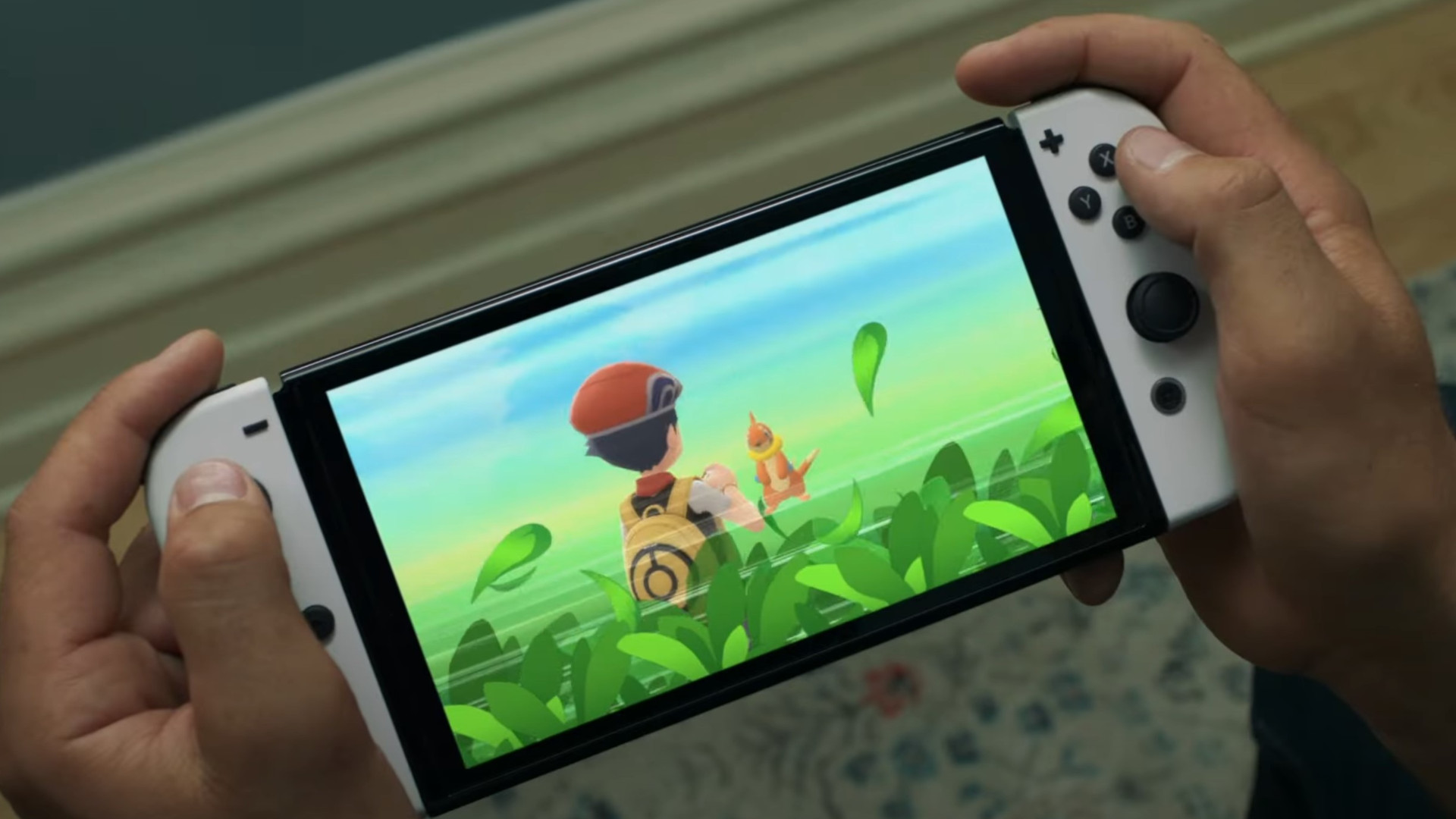TechRadar Verdict
The Nintendo Switch OLED is a welcome upgrade but one that pleases more than it wows. It's an inherently flawed product due to the console's original hybrid design: dock the Switch OLED, and the benefits of the sumptuous new 7-inch display, redesigned kickstand, and enhanced speakers vanish. If you’re a first-time Switch buyer this is undoubtedly the model to buy, but the improvements to the Switch OLED will only really benefit handheld and tabletop mode users.
Pros
- +
Larger 7-inch screen makes a difference
- +
OLED provides perfect blacks and accurate colors
- +
Enhanced speakers sound fantastic
Cons
- -
No upgrades in TV mode
- -
Internal specs remain the same
- -
Durability concerns still not addressed
Why you can trust TechRadar
Nintendo Switch OLED two-minute review
Almost three years after it's initial release, the Nintendo Switch OLED is still arguably the best console in the Switch family, despite not being a significant upgrade when compared to the standard Nintendo Switch. When you start looking at all the small improvements, they start to paint a larger picture of why the OLED is well-worth considering if you want one of the best handheld games consoles - even with a potential Nintendo Switch 2 on the horizon.
The 7-inch display drastically improves the visuals compared to the LCD of previous panels, boasting perfect blacks and vivid colors, but even outside of the display, the Nintendo Switch OLED hosts enhanced speakers to make gameplay without headphones far more enjoyable. As a whole, the console sounds definitively less tinny in comparison to its 2017 counterpart. This alone makes the best Nintendo Switch games sound crisper than ever.
In addition, the console has twice the amount of storage as the original Switch and Nintendo Switch Lite, with a total of 64GB. That is still a far cry from the PS5 and Xbox Series X, which offer far faster storage at significantly higher capacities. However, Nintendo Switch games tend to be significantly smaller, and the console has a Micro SD slot, so you can always expand if needed at an affordable rate.
So far, so good, then... but Nintendo has overlooked one of the three core pillars of the Switch experience – TV mode – and the new console is a hard sell as a result. Despite redesigning the console’s dock, adding smoother edges, more breathing room, and even a LAN port for those who like to play online, the OLED is surprisingly bare in this crucial sector.
Another great disappointment for Switch players playing on their televisions is that you’re still capped to a 1080p output; there’ll be no 4K upscaling. So whenever you dock the Nintendo Switch OLED, all of its major selling points miraculously disappear. This boggles my mind considering that this is a console that’s supposed to cater equally to three types of play.
The lack of 4K output subsequently leads to a question that Nintendo cannot avoid when it comes to the Switch OLED: why are the internal specifications the same as the original Nintendo Switch and Nintendo Switch Lite? If you're hoping for a Nintendo Switch Pro, you won't find that here. Production problems have dashed dreams of this.
Everything about this feels entirely at odds with the console's more premium feel. Countless titles and developers could have benefitted from a refresh of the Switch's aging components, so it's a shame Nintendo didn't respond to the clamor from both developers and consumers with the console approaching its sixth anniversary.
Sign up for breaking news, reviews, opinion, top tech deals, and more.
So who is the Nintendo Switch OLED model for, and is it worth splashing the cash to upgrade if you already own the original Switch or handheld-only Switch Lite? Well, if you’re new to the Switch line, the answer is a definite ‘yes’ – this is the best version of Nintendo's ingenious console to date and one that corrects many of the faults of the original model.
If you play the Switch in handheld or tabletop mode, then nothing stops you from upgrading to the OLED. The OLED has much to offer thanks to the gorgeous 7-inch OLED screen, amazing speakers, and redesigned kickstand. However, if you currently have a Switch and use it primarily in TV mode, we can confidently say that the Switch OLED would be a luxury and unnecessary upgrade.
You can watch our Nintendo Switch OLED video review below:
Nintendo Switch OLED price and release date
- What is it? The fourth iteration of Nintendo's hybrid console
- When did it come out? October 8, 2021
- What does it cost? $349.99 / £309.99 / AU$539.95
The Nintendo Switch OLED launched back on October 8, 2021, and is the fourth iteration of Nintendo's home console. It costs $349.99 / £309.99 / AU$539.95, so it’s slightly more expensive than the original Nintendo Switch, which retails for $299.99 / £259.99 / AU$469.95, and it’s obviously a more considerable investment than the Nintendo Switch Lite, which costs $199.99 / £199.99 / AU$329.95.
The Nintendo Switch OLED model's higher price tag seems reasonable, however. The upgraded console comes with a larger, 7-inch OLED display, enhanced speakers, double the internal storage and a wider kickstand, and you also get a slightly improved dock that includes a LAN port for more stable online play.
Thanks to its relative age, you can now often find the console available for below its asking price or with a desirable game included through some of the the cheapest Nintendo Switch bundles and deals so be sure to shop around before finalising your purchase.
Nintendo Switch OLED design
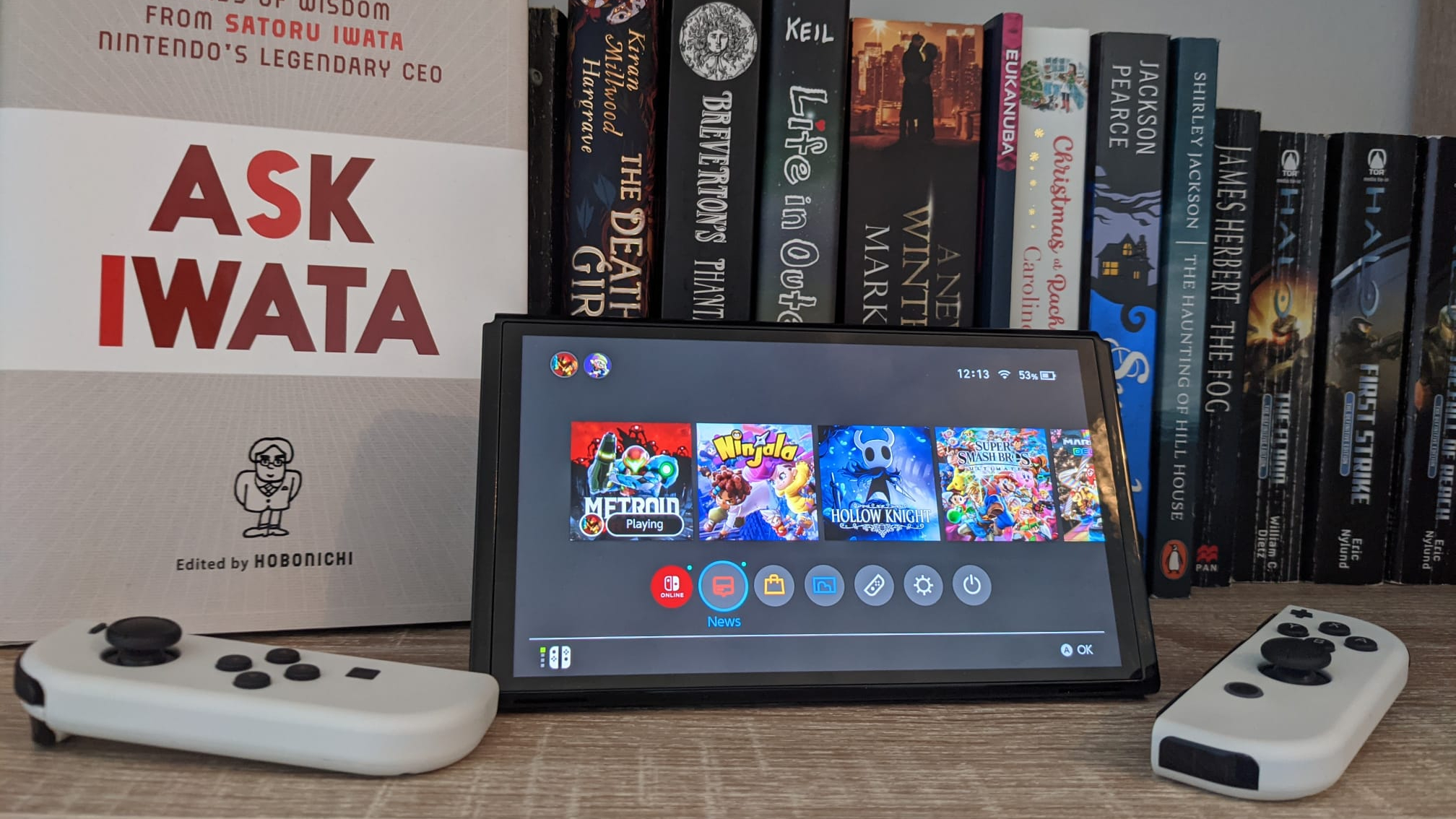
If it weren't for the larger screen and new pristine white Joy-Con controllers, you'd be hard-pressed to notice any design differences between the Switch OLED and the original Switch. However, look a little closer, and several changes can be found.
The new 7-inch OLED display is the most prominent new design feature, and it's surprisingly impactful, despite only being 0.8 inches larger than the original Switch's 6.2-inch screen. As a result, the Switch OLED is slightly bigger than its predecessor: it's 0.1 inches longer, at 9.5 x 0.55 x 4 inches (W x D x H), but it still feels immediately familiar in the hands.
The Switch OLED has a bit more heft about it, though. It weighs 422 grams with the Joy-Con attached, about 22 grams more than the Nintendo Switch. Thankfully, we didn’t find that the added weight caused any fatigue when playing, but it's worth bearing in mind if you already feel like the Switch is a touch on the heavy side.
You'll find the same Nintendo Switch accessories we're used to seeing in the box: two Joy-Con controllers, a pair of Joy-Con straps, and a Joy-Con Grip. You also get the redesigned Nintendo Switch dock, which includes the new LAN port, which is slightly longer but not quite as deep as the original dock.
There's a bit more wiggle room inside, too, which should allow for more efficient airflow and lessens the chance that you'll gradually scratch the Switch's screen by repeatedly putting it in and taking it out of the dock. The dock is also a touch lighter, not that you’ll be moving it very often, and it contains one fewer 2.0 USB port.

It's also worth noting that the Nintendo Switch OLED will work in the old dock, and the original Nintendo Switch will work in the new one. Both may require a system update, but it's pleasing to know that your old dock won't be rendered entirely useless.
Other Switch OLED design changes include a repositioned microSD slot, which sits behind the wider kickstand and is easier to find, a slightly more recessed power button that’s now oval-shaped, and a wider volume rocker. It also features smaller slits for the fans to exhaust hot air, which help to give the Switch OLED a more modern appearance. You also get a headphone jack, as on the other Switch models.
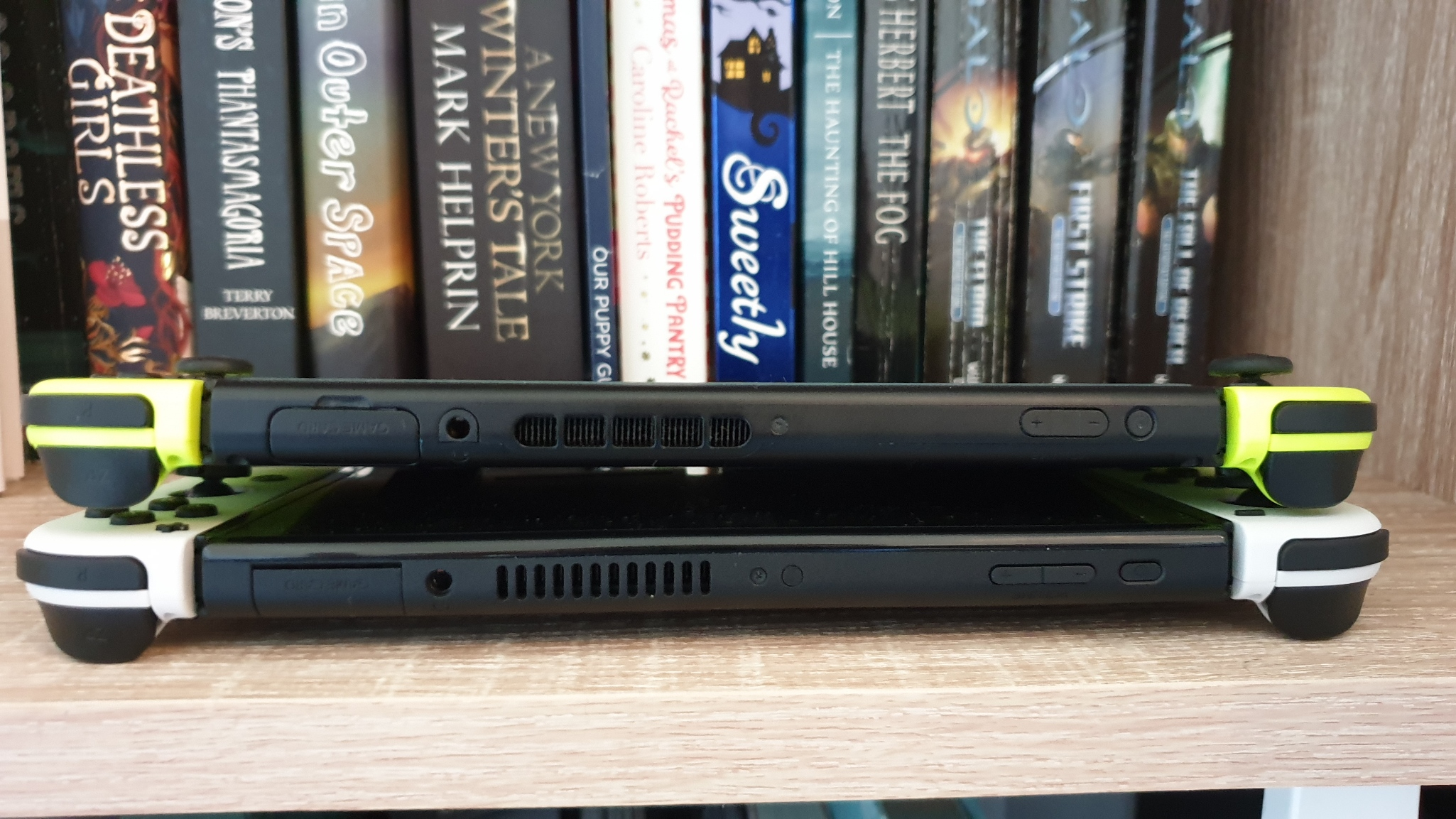
Aesthetically speaking, the Nintendo Switch OLED hides the older Switch's product information and warnings. While it's a small addition, the back of the Switch now looks much cleaner as a result, with the info tucked discreetly away behind the new stand.
While we mostly welcome the Nintendo Switch OLED's more minor design touches, we severely dislike one change: the new Game Card slot. The little indentation on the original Switch's Game Card slot is gone, making it almost impossible to open if you don't have any fingernails. We found ourselves scratching at the Game Card's new slot countless times in an attempt to pry it open, and frankly, we can't understand why this change was made when it’s objectively worse.
Nintendo Switch OLED: handheld mode
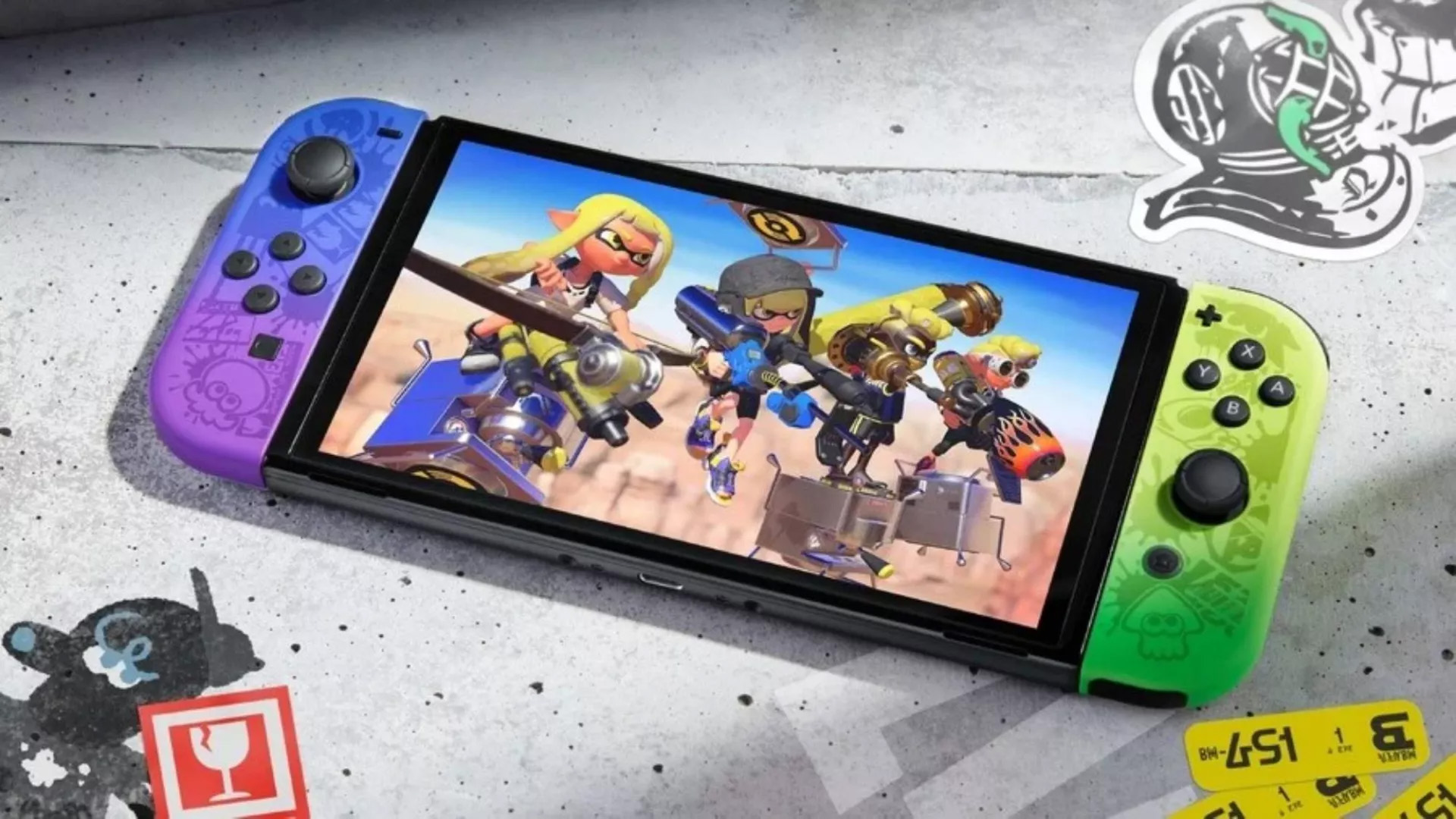

The Nintendo Switch OLED lets you choose between two screen settings: Vivid and Standard. Vivid is the default setting and provides extremely punchy and vibrant colors, which many will find pleasing. Standard, meanwhile, is more akin to the original Switch's color setting and provides a more natural and accurate picture. By heading to System Settings > System > Console Screen Vividness, you can see which suits you best.
Nintendo's Switch OLED model shines in handheld mode thanks to the vibrant new display. The 7-inch panel makes it easier to track the action in fast-paced games like Super Smash Bros. Ultimate, and the high-contrast display breathes new life into Mario Kart 8 Deluxe. Metroid Dread is an excellent showcase, too, as its dimly lit levels and alien-like color palette benefit from the OLED’s incredible contrast ratio.
Compared side-by-side with the new display, the original Switch’s LCD panel, almost looks washed out. Everything looks punchy and enticing on the OLED model – blacks, in particular, are inky and inviting on the OLED, whereas on the original, they look muted and gray.
The Switch OLED's display is still only 720p; however, games and text still looked sharp and legible when using the console in a comfortable position. We didn't encounter any motion blur issues, and the display was suitably bright, even in daylight conditions.
We still don't think the Nintendo Switch OLED is the most ergonomic gaming device we've ever used. The flat and wide console shape can lead to hand cramps during longer play sessions, and Joy-Con controllers use the same design as the original console, which is five years older, meaning durability concerns remain. The Joy-Con still tends to move up and down ever so slightly when attached to the console, too, which we’ve always found concerning since they’re supposed to lock in place.
Nintendo Switch OLED: TV mode

Unfortunately, the Nintendo Switch OLED offers zero improvements over its predecessor in TV mode. Yes, the new dock includes a LAN port for more stable online gaming compared to playing over Wi-Fi, but you still get the same 720p UI and a max output resolution of 1080p. Even then, you could plug a LAN adapter into your Switch dock.
With 4K TVs now commonplace in most households, it seems like a massive oversight not to include any 4K support with the Switch OLED. Even the Xbox One S, a console released in 2016, can output at 4K.
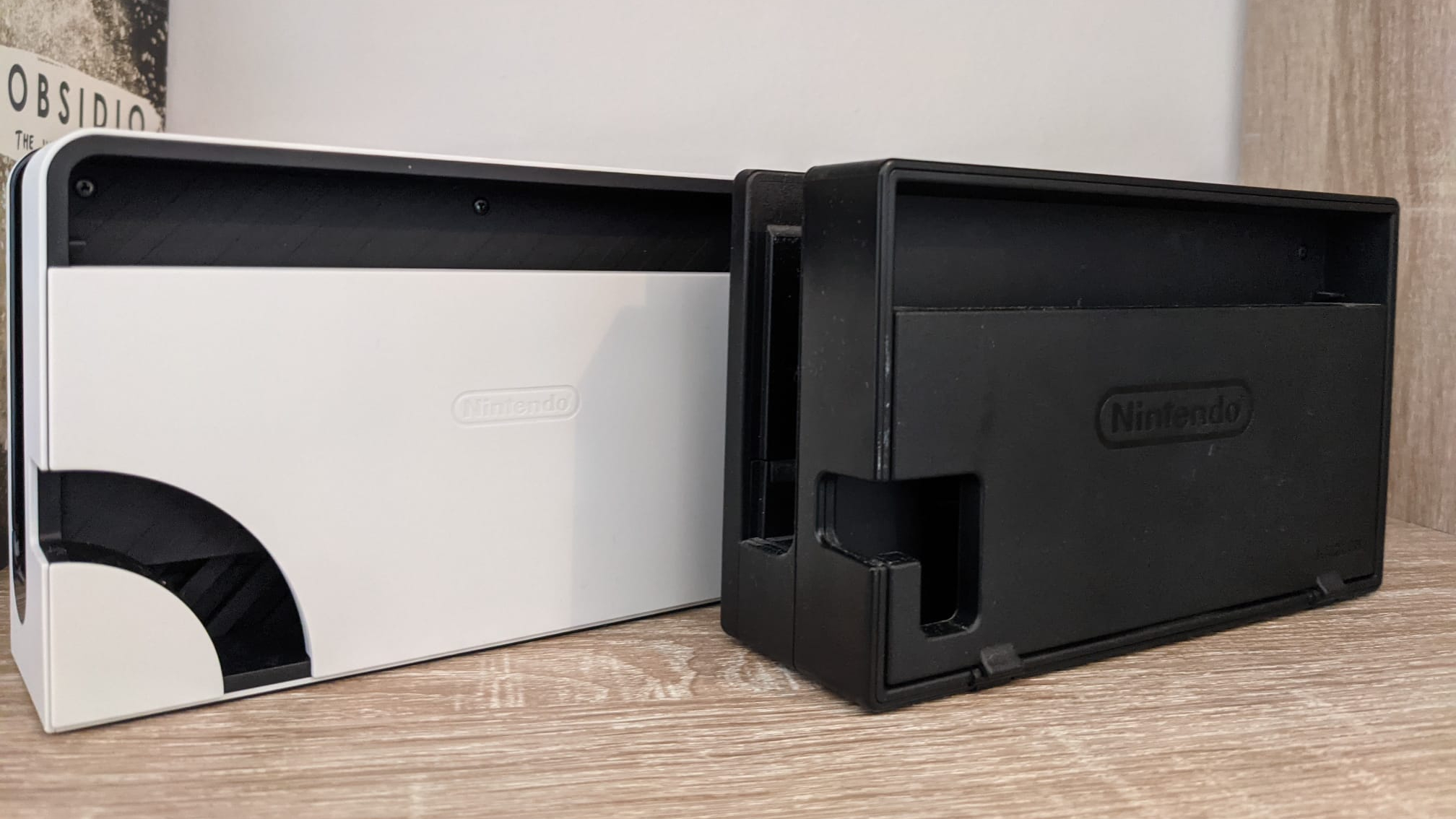
The Nintendo Switch OLED also doesn't include support for high dynamic range or HDR as it's commonly known. Again, we've seen last-gen consoles like the PS4 and Xbox One offer this functionality for years, so it would have been great to see Nintendo implement some modern-day display technologies to boost TV mode.
Nintendo Switch OLED: tabletop mode
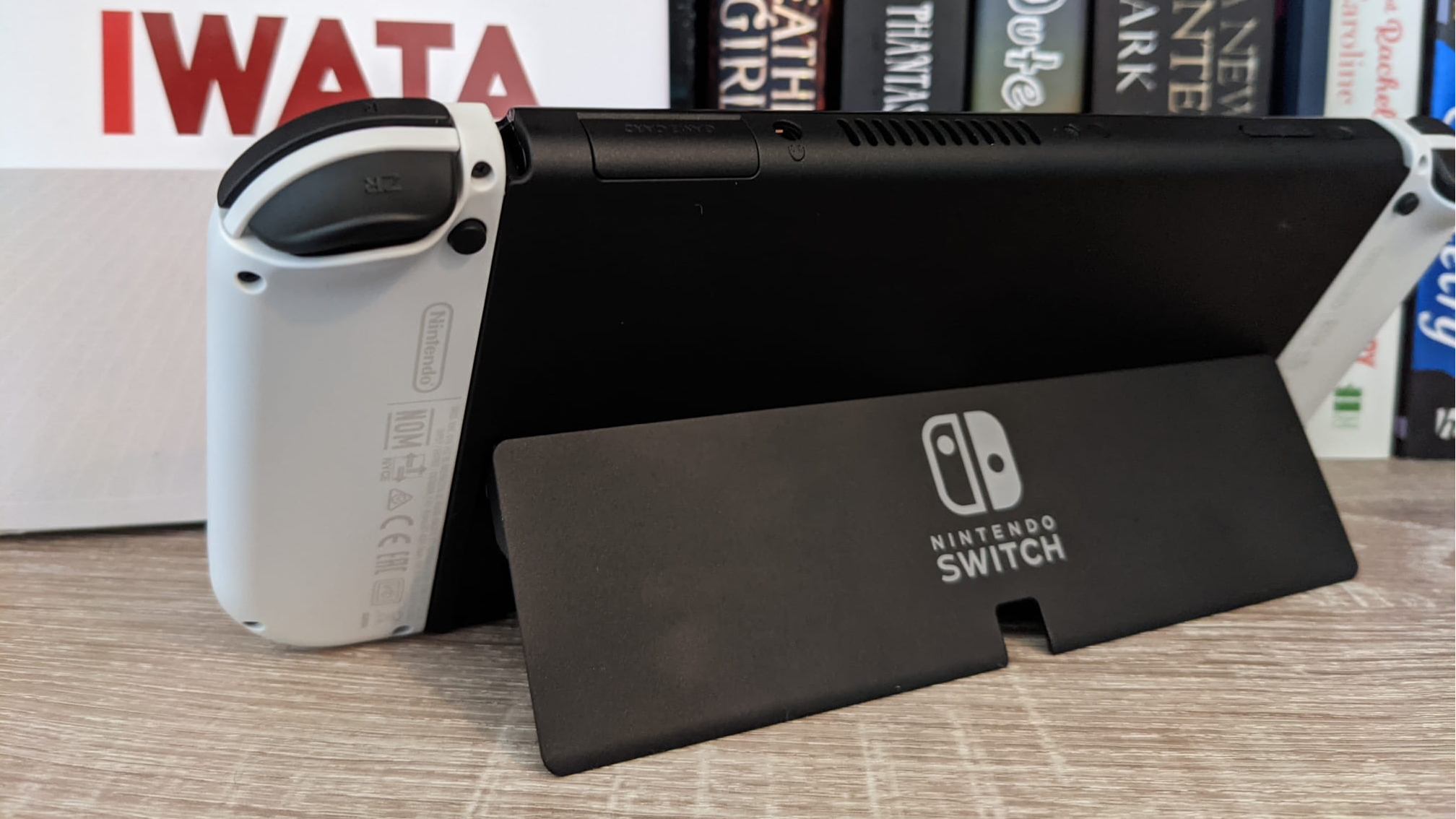
Another plus point of the Nintendo Switch OLED is its performance in tabletop mode. Thanks to its wider, redesigned kickstand, it's far easier (and safer) to use in tabletop mode, perfect for impromptu multiplayer sessions. The hinge is far more robust and makes a satisfying thud when closed – we don’t have any concerns about it loosening over time and failing to snap into place like the old one.
As on the original Switch, Joy-Con controllers can be detached from the side of the unit, allowing you to prop the console on a table or other surface to play with a friend (or stranger) at a moment's notice.
But where the old kickstand limited you to one viewing angle, the Switch OLED's adjustable stand can be positioned in multiple ways. It makes for a far more enjoyable viewing experience, and the excellent viewing angles of the OLED display mean you don't need to huddle together when facing off in Mario Kart 8 Deluxe.
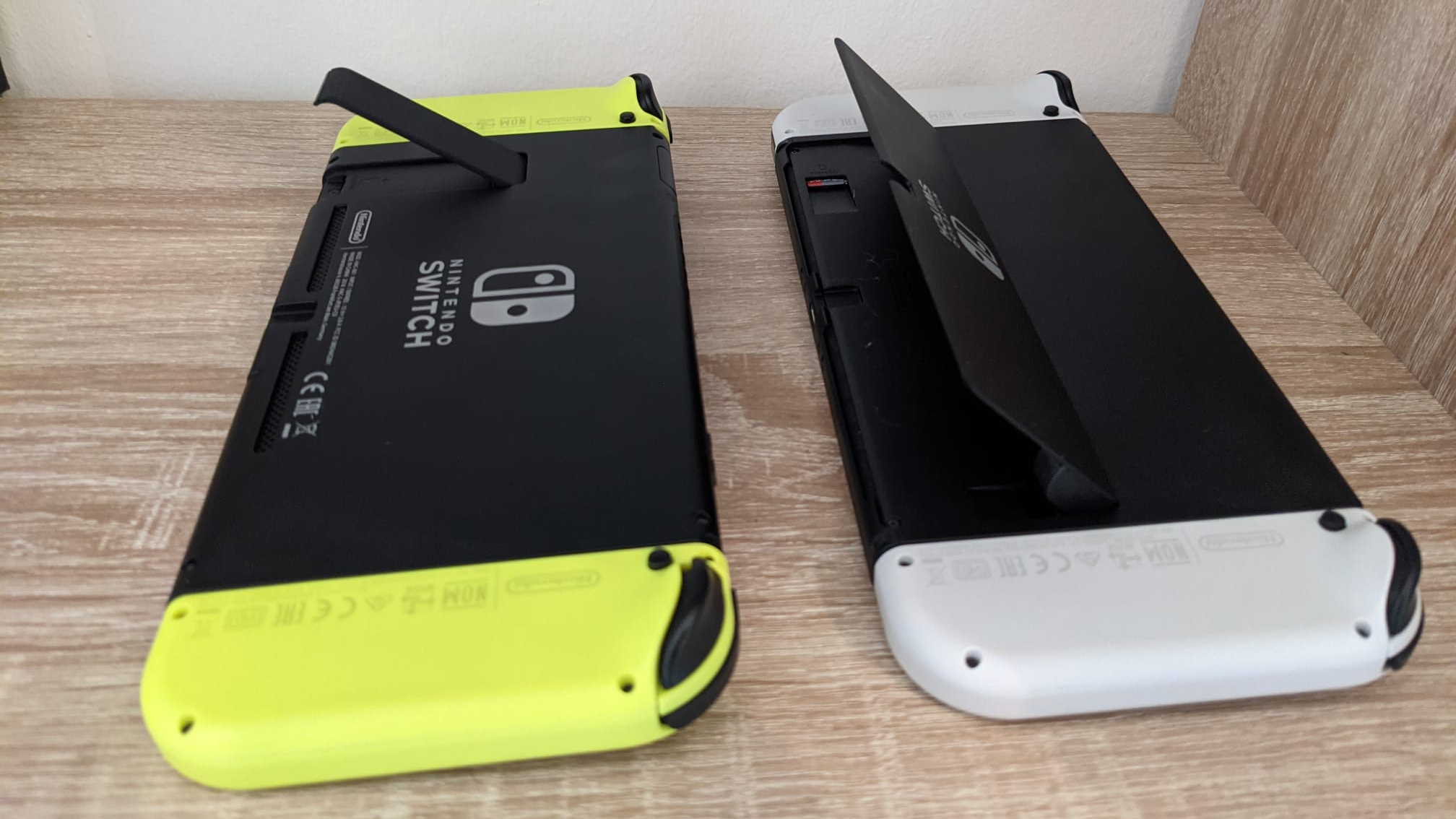
The Nintendo Switch OLED's enhanced speakers also really come to life in tabletop mode. Our favorite games sounded punchy and clear, without distortion at higher volumes, which is essential when you can't reach for a pair of the best gaming earbuds.
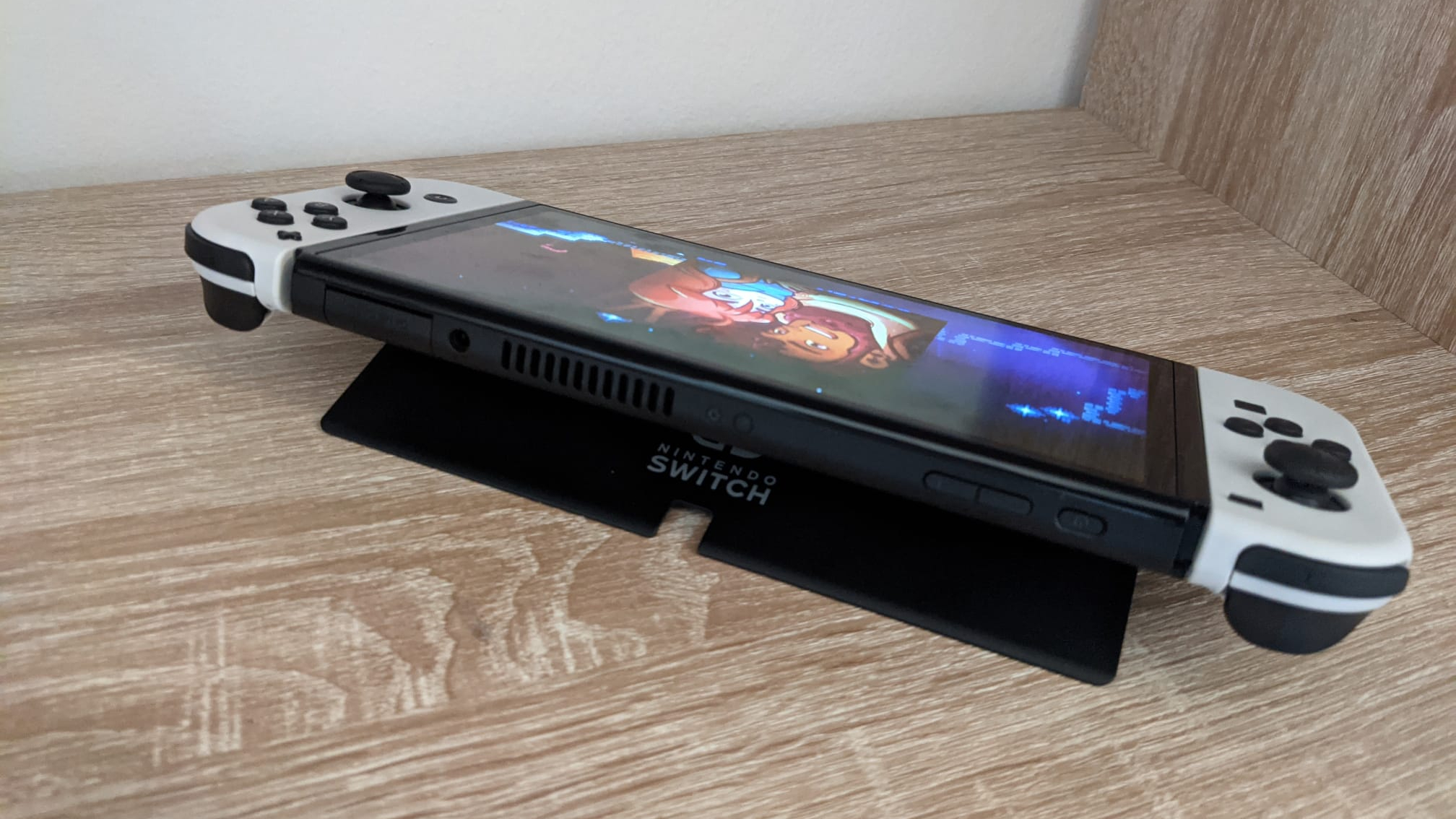
Nintendo Switch OLED performance
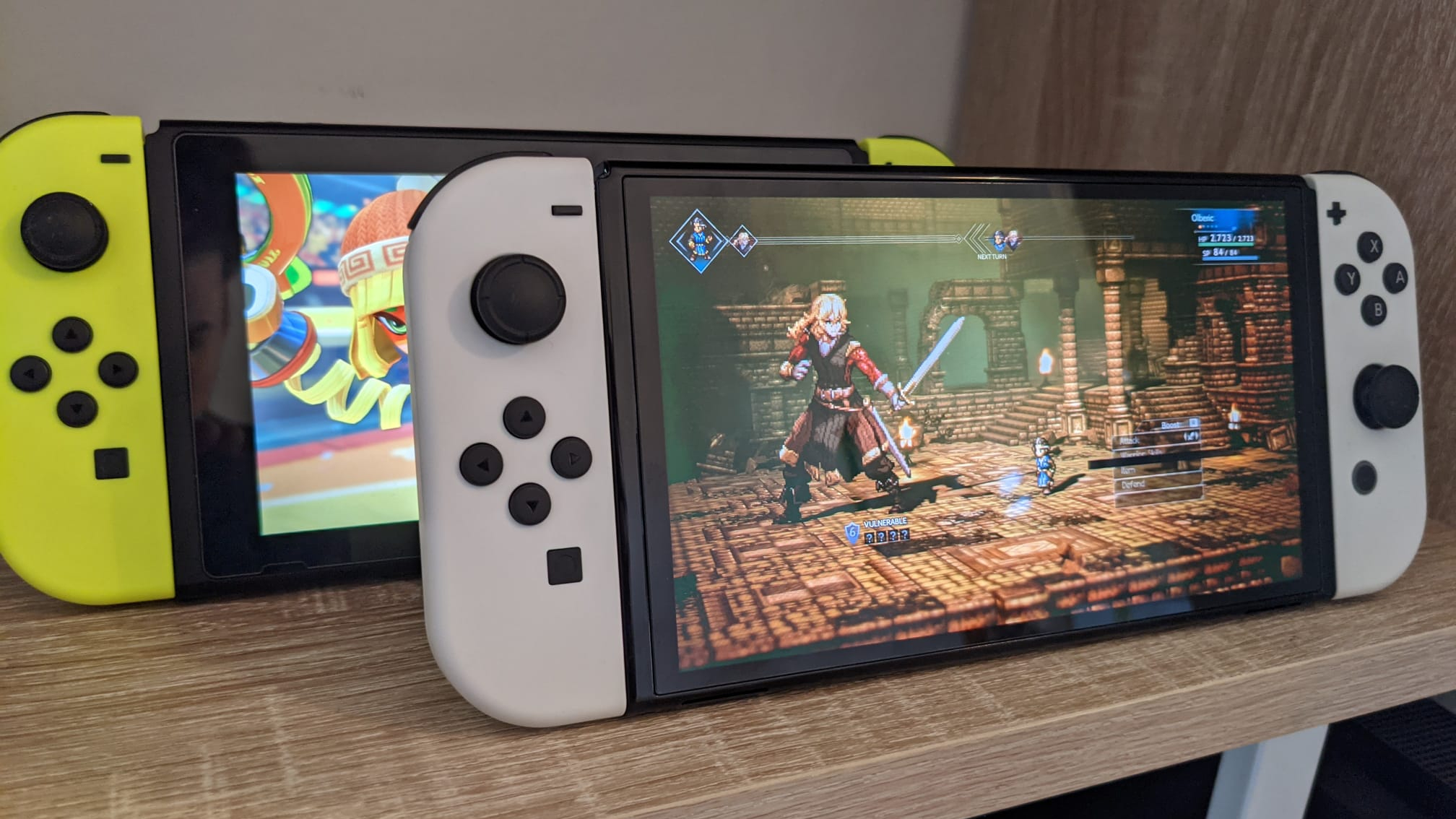
Even though the original Nintendo Switch was approaching its fifth anniversary when this released, the Nintendo Switch OLED model offers no performance boost whatsoever. The enhanced display aside, the best Switch games look and play the same as before, with the new console having the same Nvidia Custom Tegra X1 processor and 4GB of RAM as its predecessor.
This will disappoint those who were hoping for a more powerful Switch model, which has often been dubbed a "Nintendo Switch Pro". Most Switch games still play perfectly well, of course, but there's no doubt that the console's hardware is beginning to show its age. That's especially true that the PS5 and Xbox Series X are on the market.
Games will at least look prettier thanks to the console's new high-contrast display, and for some, that might be enough – but we were hoping for more here. Thankfully, battery life is on par with the Nintendo Switch (2019) version, so expect between 4.5 hours and nine hours, depending on the game you're playing.
Nintendo Switch OLED game library
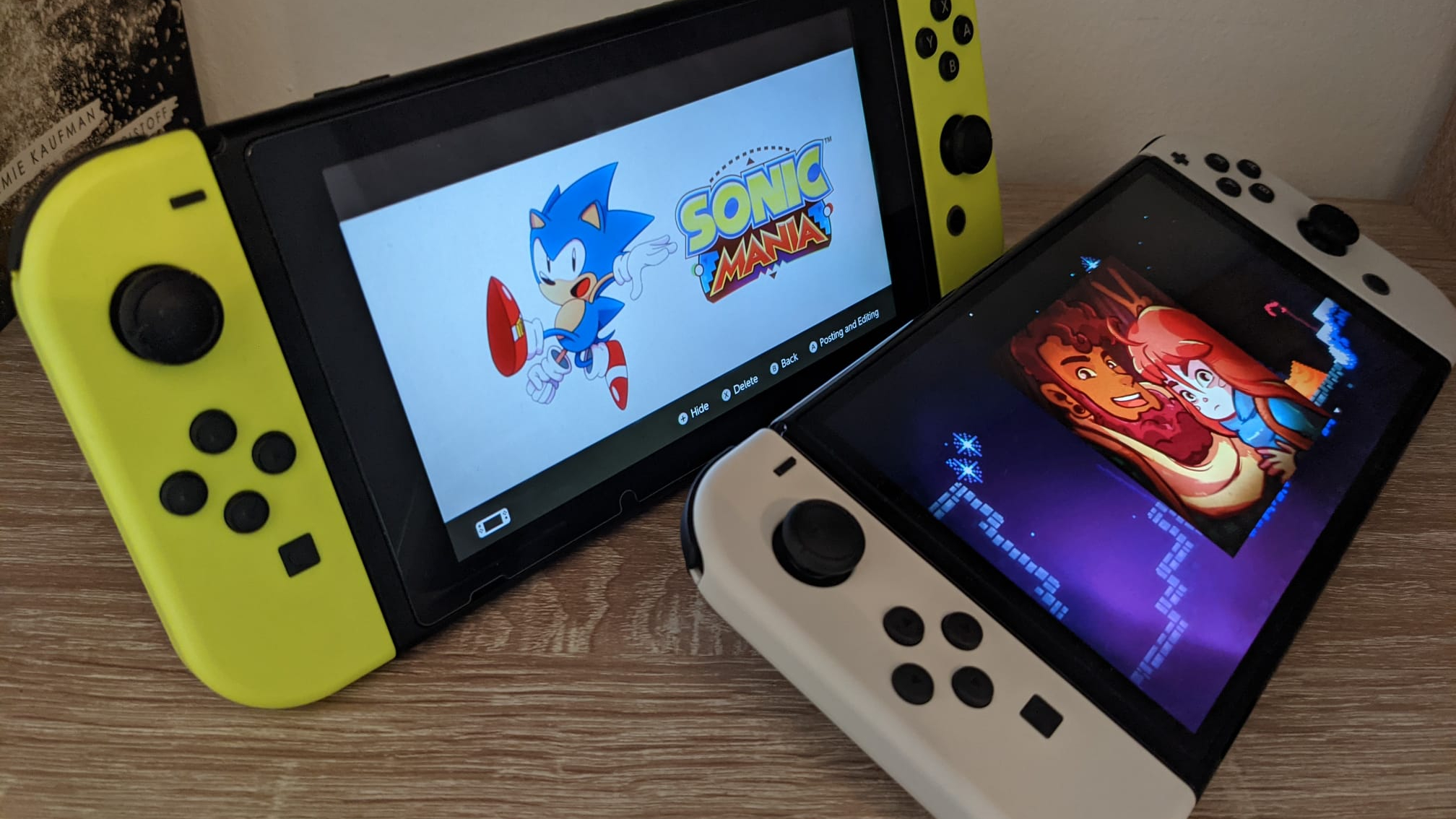
Of course, the main reason to pick up a Nintendo Switch OLED is to play games, not just to ogle the new hardware. And it's here where the Switch excels. The Switch's library of games is jam-packed with some timeless classics, like The Legend of Zelda: Breath of the Wild, Super Mario Odyssey, Mario Kart 8 Deluxe, Animal Crossing: New Horizons, and Super Smash Bros. Ultimate.
And it's not just Nintendo's first-party line-up that makes the Switch an appealing prospect; the console is also home to fantastic indie games such as Hades, Celeste, and Spelunky 2, many of which feel far more enjoyable to play untethered from the TV.
It means there's a game to suit every player's tastes, and many more blockbusters will come, including Metroid Prime 4: Beyond. You'll have plenty of titles to play on the Nintendo Switch OLED.
Should you buy the Nintendo Switch OLED?
Buy it if...
You play almost exclusively in handheld and tabletop mode
The Nintendo Switch OLED's most significant improvements come to the fore when you’re playing in handheld or tabletop mode, with the gorgeous OLED screen, wider kickstand, and enhanced speakers combining to offer a far more enjoyable experience.
You're a first-time Switch buyer
With its new display, improved kickstand, and enhanced speakers, this is the best version of the Nintendo Switch to date. If you're a first-time buyer, it's easy to recommend it over the original model, despite the higher price tag.
Don't buy it if...
You primarily play Switch games in TV mode
Almost all of the console's new benefits disappear once the Nintendo Switch OLED is in its dock. The console still outputs at 1080p, which can look noticeably soft on 4K displays, and there's no HDR, VRR, or auto low-latency mode support.
You want a more powerful Switch
The internal storage boost aside, the Switch OLED has the exact same technical specs as the original model, so you won't experience any improvements to resolution or frame rates over the original Switch when playing games.
FAQs
What is an OLED display?
OLED stands for ‘Organic Light Emitting Diode’. OLED panels bring you better image quality (blacker blacks and brighter whites), reduced power consumption, and faster response times. OLED panels emit their own light when an electric current is passed through, whereas cells in an LCD-LED display require an external light source, like a giant backlight, for brightness. It means individual pixels can be turned on and off, preventing the display from exhibiting backlight bleed, bloom, or haloing that can occur in other display technologies.
Is the Nintendo Switch OLED prone to burn-in?
Burn-in is a term used to describe permanent image retention on OLED displays that can occur from looping logos or static HUDs. When such elements are displayed for hours, it can permanently scar the panel's pixels, leaving residual 'ghost' patterns that can't be turned off. Fortunately, Nintendo told TechRadar: "We’ve designed the OLED screen to aim for longevity as much as possible, but OLED displays can experience image retention if subjected to static visuals over a long time.
"However, users can take preventative measures to preserve the screen by utilizing some of the Nintendo Switch console’s included features, such as using auto-brightness to prevent the screen from getting too bright and enabling the auto-sleep function to put the console into “auto sleep” and turn off the screen after short periods of time."
Nintendo Switch OLED: Recent updates
Nintendo has been building upon the Switch OLED since it launched in October, 2021. Between system updates and additional features like Nintendo Switch software folders to better organize our library of games, there have been many elements to help make the Nintendo Switch OLED still a prime console to have in your collection - even two years after its initial launch.
In addition to this, there's no end of upcoming Switch games to look forward to, but if you’re after the older classics, fear not. Thanks to the Nintendo Switch Online subscription service, there’s a continually growing library of NES and SNES games to play. If you’ve opted for the Expansion Pack, there’s an even larger library of games to explore.
If you've bitten the bullet and bought a Nintendo Switch OLED, then you might want to check out the best Nintendo Switch carry cases, or the best Nintendo Switch accessories to help make the most of your system and gaming space.
Adam was formerly TRG's Hardware Editor. A law graduate with an exceptional track record in content creation and online engagement, Adam has penned scintillating copy for various technology sites and also established his very own award-nominated video games website. He’s previously worked at Nintendo of Europe as a Content Marketing Editor and once played Halo 5: Guardians for over 51 hours for charity. He is now an editor at The Shortcut.
- Henry Stockdale
- Kara PhillipsEvergreen Writer
- Rhys WoodHardware Editor
- Dashiell WoodGaming Editor
